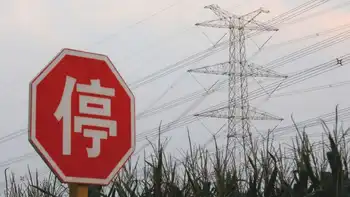Falling silicon prices pressure thin-film solar
By Reuters
Arc Flash Training CSA Z462 - Electrical Safety Essentials
Our customized live online or in‑person group training can be delivered to your staff at your location.

- Live Online
- 6 hours Instructor-led
- Group Training Available
Spot prices on the solar industry's key raw material, polysilicon, have halved since January, giving a leg up to solar panels that rely heavily on the material.
Thin-film solar panels, made with little or no polysilicon, are starting to lose their competitive edge over China-made silicon-based modules, which are more efficient in transforming the sun's rays into electricity.
"First Solar is still the undisputed leader, but finally, someone's competing with them," said Macquarie analyst Kelly Dougherty. Intensifying price competition is making scale all-important, hurting the chances of start-ups, she said. "If this trend continues, I wouldn't be surprised if just a handful of thin-film companies are left."
U.S.-based First Solar, the world's top thin-film company, has been snapping up large, utility-scale contracts in Europe and the United States thanks to its cadmium telluride panels that are cheaper to produce than the traditional silicon-based panels that dominate the market.
But the precipitous drop in silicon panel prices is eroding First Solar's lead.
Last month, the chief executive of German solar power plant builder and First Solar customer Phoenix Solar AG said the company was ready to shift toward silicon-based panels if prices drop far enough.
Crystalline silicon and thin film solar panels are now competing in the same markets for the same customers, Andreas Haenel said on a conference call, adding that Phoenix had been able to negotiate lower prices with First Solar as a result.
"Whenever we see that one is getting the advantage over another, we are flexible to shift from left to right and from right to left," Haenel said.
Polysilicon prices will continue to fall as semiconductor demand stays weak and oversupply plagues the solar sector, industry players say.
That, along with potential demand gains from a new solar subsidy in China, would further lower costs for Chinese manufacturers, who already boast processing costs of 90 cents to $1 per watt of generating capacity — narrowing the gap with ultra-low-cost First Solar and giving Sharp and Taiwanese thin-film makers such as NexPower Technology, an affiliate of United Microelectronics Corp, a run for their money.
Chinese manufacturers including Suntech Power Holdings Co Ltd, Trina Solar and Yingli Green Energy Holding Co Ltd have been able to cut their prices more aggressively than their German and U.S. peers because they procure more polysilicon from the spot market and because of low electricity and labor costs.
Yingli Green Energy Holding Co Ltd, which is undercutting even its Chinese rivals, was tapped by U.S. power company and First Solar customer AES Corp last month to be its exclusive supplier of crystalline silicon solar panels — a deal Barclays Capital analyst Vishal Shah wrote "shows further evidence that low poly prices are likely closing the gap between First Solar and Yingli panel prices."
Silicon-based panels are thought to be competitive with thin film at about 1.60 euros ($2.26) per watt of generating capacity, according to Friedman Billings Ramsey analyst Mehdi Hosseini.
On average, prices are now between 1.70 euros per watt and 1.80 euros per watt, Hosseini said, adding that China's Yingli recently beat out First Solar for a contract in Germany by pricing below the market average at 1.60 euros per watt.
First Solar officials did not reply to a request for comment on Hosseini's assertion.
"These price falls are a major problem for thin-film makers, especially for those that use turnkey lines from Applied Materials Inc or Oerlikon and who just deliver standard amorphous tandem thin-film cells," said iSuppli analyst Stefan de Haan.
Applied Materials customers include India's Moser Baer, U.S.-based private company Signet Solar and China's ENN Solar Energy Co. Oerlikon customers include Germany's SCHOTT Solar and ErSol Solar Energy AG and Taiwan's CMC Magnetics Corp.
Not that anyone expects First Solar to be run out of the market. Rather, lower prices on silicon-based panels will pressure the company to stay competitive by cutting its own prices, ultimately driving down earnings estimates.
"First Solar is still one of the best companies, it's just that competition is catching up and do you really want to buy it at $200?" said Hosseini, who cut his rating on First Solar to ‘underperform’. "The kind of earnings that I am expecting justifies a $100 or $110 stock, not $200."
First Solar's stock was at $190.66 in one day of trading on Nasdaq and has gained about 30 percent so far this year. The shares trade at about 25 times 2009 earnings estimates, compared with multiples of 22, 15 and 11 for Yingli, Suntech and Trina.
One First Solar investor said that while competition was heating up, he still expected the company to compete best for contracts with U.S. utilities, who are willing to trade efficiency for the lowest price possible.
"It does make thin-film marginally less superior, but it definitely hasn't eroded its advantage," said Edward Guinness, a fund manager with Guinness Atkinson Funds, which owns more than 11,000 First Solar shares. "We've always seen thin-film as having an attractive niche. I don't think it's going to take over the whole market, and I've never thought that."











